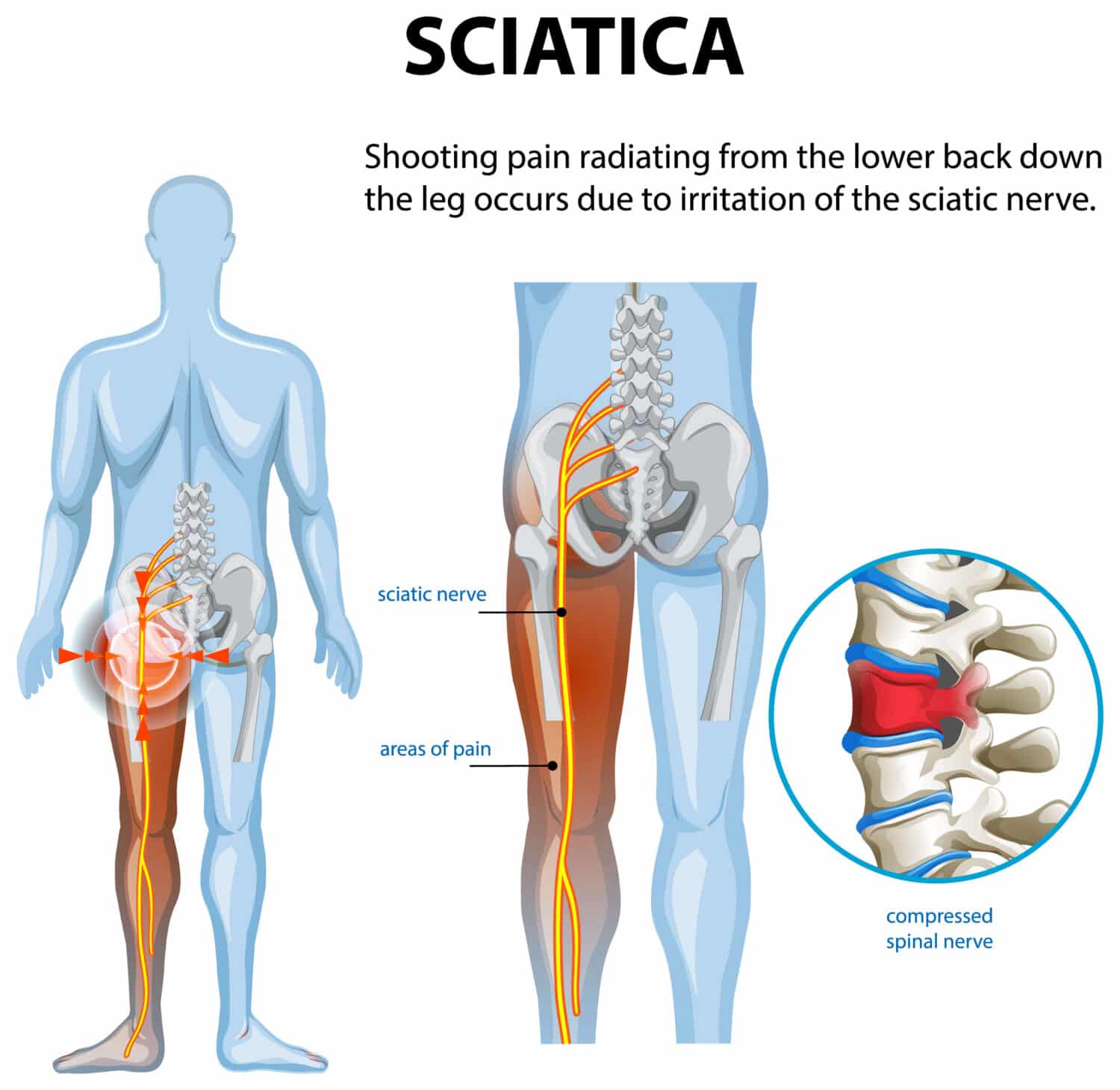Key Takeaways
What is Sciatica?
Sciatica is a common condition affecting up to 40% of people at some point in their lives, according to the National Institutes of Health (NIH). The pain, which often starts in the lower back and radiates down the leg, is caused by compression or irritation of the sciatic nerve. This can result in shooting pain, numbness, and muscle weakness, making daily movements difficult.

Common Causes of Sciatica:
Traditional treatments like pain medication and physical therapy can help, but a growing number of people are turning to acupuncture as a drug-free alternative.
How Does Acupuncture Help with Sciatica?
Acupuncture is a 2,500-year-old practice used in Traditional Chinese Medicine (TCM) to restore energy flow, or Qi, throughout the body. While originally based on energy pathways, modern research has shown that acupuncture stimulates the nervous system, leading to reduced inflammation and increased blood circulation—both crucial for sciatic pain relief.
A 2018 study published in Pain Medicine analyzed 11 clinical trials and found that acupuncture was significantly more effective than conventional pain treatments for sciatica, helping patients reduce pain intensity and improve mobility.
How Acupuncture Works
From a scientific perspective, acupuncture helps relieve sciatica symptoms by:

Sciatica Acupuncture Points
A 2020 study in The Journal of Pain Research found that targeting specific acupuncture points resulted in a 50% reduction in nerve pain for chronic sciatica sufferers. These key points include:
Stimulating these points can improve mobility, decrease inflammation, and reduce sciatic nerve compression, leading to long-term relief.
What Does the Research Say?
Multiple studies support acupuncture as an effective treatment for sciatica.
With millions of people worldwide suffering from sciatica, acupuncture is increasingly recognized as a safe and effective alternative to conventional treatments

What to Expect from an Acupuncture Session
If you’re considering acupuncture for sciatica, it’s natural to wonder what the experience is like. Acupuncture sessions are non-invasive, generally painless, and highly relaxing.
Initial Consultation
Your acupuncturist will ask about your pain level, medical history, and lifestyle to create a customized treatment plan. A physical exam may be done to check for muscle tightness and nerve sensitivity.
Needle Placement
Thin, sterile needles are inserted into specific acupuncture points for sciatica. Research shows that correct needle placement is key to achieving pain relief. Some patients report a tingling sensation or warmth, but discomfort is minimal.
Relaxation Period
The needles remain in place for 20–40 minutes. Many patients describe this time as deeply relaxing, as acupuncture also helps regulate stress and calm the nervous system.
Post-Treatment Effects
Some people feel immediate pain relief, while others notice gradual improvement over multiple sessions. Studies show that acupuncture is most effective when done consistently, with 6–12 sessions recommended for long-term results.
How to Manage Rheumatoid Arthritis Disability
These services work together to create a complete plan for managing your symptoms and improving your health. Contact us today to learn how we can help you manage your rheumatoid arthritis.
Final Thoughts
If you’re seeking a drug-free treatment for sciatica and acupuncture sounds like a promising option, consult a licensed acupuncturist to discuss your symptoms and treatment plan. Contact Newmarket Health and Wellness to book your appointment today!


